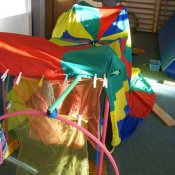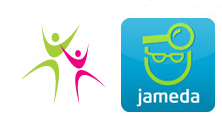Therapies for Infants | Practice for Physiotherapy and Psycho motility Nadine Bartel
Physiotherapy for Central Motor Disorders (acc. to Bobath)
In the Bobath therapy for children, already newborns and babies get to know physiological, healthy motion sequences. The therapist recognizes the current development stage of the child and provides specific assistance until the next development stage is reached. This includes, for example, the active prone and supine position, moving over both sides of the body up to an active seat, the movement in form of crawling and scrabbling, the erection into a standing position and walking at the end of the first year of age.
In the so-called "handling", parents receive an instruction how to hold, carry and turn their baby at home so that they learn how to independently accompany the healthy development of their child.
The Bobath therapy for children is a specific, neurophysiologic concept. It is particularly suited for:
- Newborns,
- Children with development problems respectively delays,
- Children who are threatened by disability or are already disabled.
It also includes care beyond the first year of age as well as a specific provision of therapeutic appliances.
We also offer this treatment as preventive service/consultation.
Playgroups for the Promotion of Motility
Individual groups on request
Three-Dimensional Feet Therapy
We offer three-dimensional manual feet therapy on neurophysiologic basis.
Initially, this kind of therapy was introduced by Ms Barbara Zukunft-Huber in the year 1992 at the International Physiotherapy congress in Heidelberg. It is based on the usual feet development of a child in the first year of age and manual-therapeutic criteria. It provides new approaches for treat-ing pigeon toes, club feet, skew feet and flat feet. This treatment is described in the book "Der kleine Fuß ganz groß"(published by Urban & Fischer Verlag, Munich, ISBN 3 – 437-47990-3).
Pigeon toes and club feet can be treated without cast fixation. Club feet of the first and second grade which were scheduled for surgery often did not have to undergo surgery. But it needs to be emphasised that this depends on the severity of the foot and is not possible in any case.

 Therapies for Infants
Therapies for Infants

